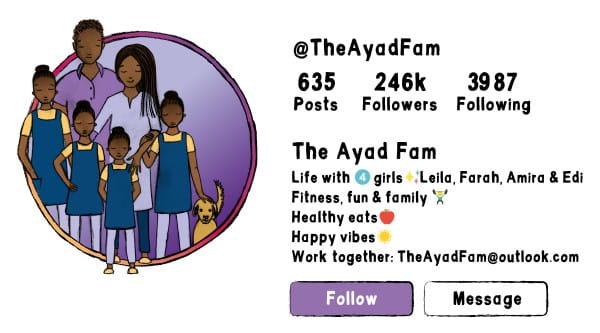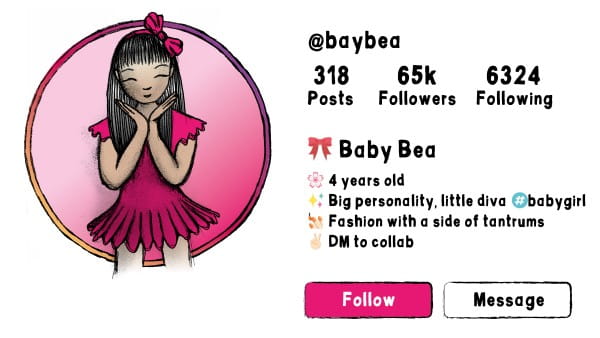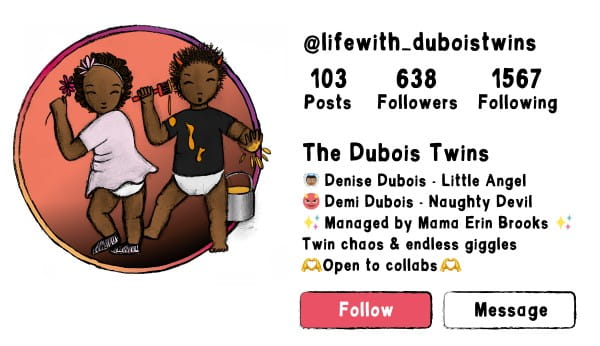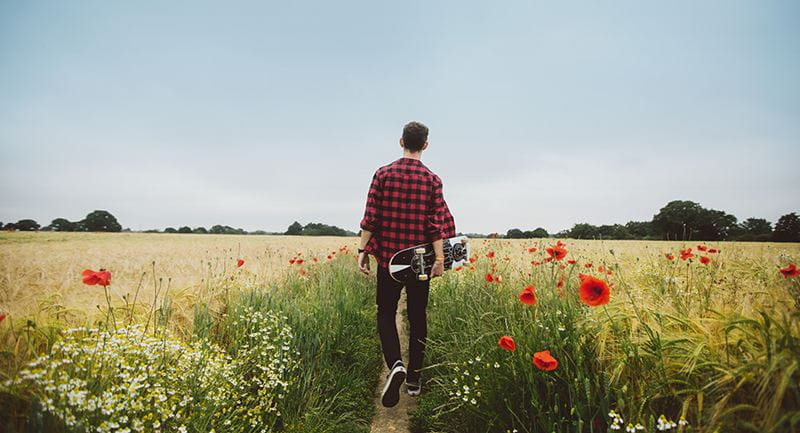Family

Potential risks to family relationships
These questions could be posed as part of your risk assessment practices:
Impact on parent's career

Cole
Now that Cole has an opportunity to become part of the 'online talent collective' within a global entertainment company, his parents are considering whether to home-school Cole. This would address the in-school bullying issues, as well as giving them the flexibility to send him to extra dance classes and honour the contract commitments for his content.
Cole's mother is thinking about giving up her job in order to home-school Cole, as she could create additional educational content covering Cole's home-schooling journey.

Edi
Edi's family account activities are so popular that both of Edi's parents have given up their jobs and rely solely on the income generated by the family content.
Risk management
Full-time influencer careers can provide opportunities for flexibility, creativity and independence, but this income can also be inconsistent and unreliable longer term. Influencers often discuss the pressure to keep up with content, the hostile and gendered working environment, and fears of being ‘cancelled’ or no longer being relevant.
These pressures are magnified when considering the life-cycle of child-related content, which will have an even more time-dependent nature. Family vlogging could be viewed as a ‘family business’ but it does not offer the same securities as other forms of income generation, and placing such responsibilities on children may create too much of a burden.
Education-related content, which stems from forms of home education and/or homeschooling, can provide support and peer interaction for parents during difficult and isolating moments. Parents who are considering homeschooling will have to interact with their local authorities to determine that this is the best route for the child, and any filming or content creation should be disclosed and considered within this context.
Impact on parent/child relationship

Adam
Adam's father is responsible for his account management and the content production but, as Adam is usually running during practice and training, his father struggles to get accurate 'action shots' that are not too blurred or out of focus. This requires additional shots and recordings where Adam looks like he is playing football but he is moving more deliberately and to direction. Adam and his father both find this process an annoyance and Adam is already tired after practice and just wants to get home for dinner.
At weekends Adam usually has training on Saturday and a match on Sunday, and in his spare time he plays FIFA on his X-box, which his dad sometimes live streams. Adam finds this intrusive, as he sees this as his own time to have fun online with his friends.

Bea
Bea's mother has received a brand direction for a sponsored 30-second reel, requiring that Bea say 4 lines while wearing a certain outfit, using the product, and holding it so that it faces the camera. Bea is struggling to understand and/or say the words in the correct order and does not know how to say the brand name properly. It takes a few days for Bea to be able to get this all right.
During the recording, Bea wants to play with the product and hits it on the ground, breaking the product and making a mess of her outfit in the process. The content takes 12 attempts to record and edit but, as Bea gets tired and dirty, this has to be done over a few days.
The process is quite frustrating and Bea's mother sometimes struggles to be patient with her.

Cole
Now that Cole has an opportunity to become part of the 'online talent collective' within a global entertainment company, his parents are considering whether to home-school Cole. This would address the in-school bullying issues, as well as giving them the flexibility to send him to extra dance classes and honour the contract commitments for his content.
Cole's mother is thinking about giving up her job in order to home-school Cole, as she could create additional educational content covering Cole's home-schooling journey.

Edi
Edi's sister is 12 and has stopped wanting to be dressed in a similar way to her sisters and to be as involved in the family 'healthy lifestyle' content. Edi's parents keep having to offer her nice things in order to persuade her to be a part of the family activities, which are an important part of the brand that they have built.
Edi's parents regularly talk about 'numbers' at the dinner table, as well as how 'natural' or 'relaxed' the children should look in their content, and they tell the children off if they are seen to be 'grumpy' or 'bored'.
Risk management
Research indicates that production of a 30-second reel with a small child can take as long as 3 days to produce, as the child may struggle to understand the task and directions involved etc. and they will need clear instructions, as well as patience and guidance. Again, in professional advertising situations, companies would have trained professionals on set or at shoots to manage this process in compliance with a range of safeguarding processes. Brands should be aware of these limitations when issuing directives to parents and parents should be able to negotiate for clear and manageable expectations in terms of these directions and their expected timelines.
In family content parents are currently navigating these complexities alone, which can place a strain on normal parent/child interactions, especially if the child is not interested in the activity or would prefer to be doing other things. Parents might need to become very pro-active in ensuring that the child is willing to engage in the activities and that they remain fun, for short periods of time, and that they have sufficient rest and breaks for refreshment etc. This should not be as a ‘treat’ or incentive however, to elicit content, and the child should be participating on their own terms (or not!).
Parents should also be aware of their role as both parent and ‘manager’ in these situations and find ways to explain the activities in a clear and helpful manner, with an even and kind tone of voice: If they feel their own emotions or temper rise it is probably time to take a break!
Finally, while the content is being produced for an external audience, sometimes the amount of ‘views’ or external comments can prove overwhelming for the child (more on this in the identity section). These perspectives can also inform parents’ reflections on their child’s performance and any related ‘feedback’ they give the child, but these observations can make children feel that they are not pleasing their parents and that they are doing things ‘wrong’. Ongoing monitoring of these issues, as well as support for the children will be of importance here (more information in the identity and dignity sections).
Impact on wider family relationships

Demi and Denise
Demi and Denise's account regularly portrays the girls in devil/angel costumes and/or with horns or wings added as filter effects.
The girls' father is no longer living in the family home, but he sees them twice a week. He does not like either the fact that the girls have such a public profile, or the way in which the girls are positioned in this saint/sinner fashion. He is considering applying for sole custody, as he feels that the girls would be better off with him.

Flick
Flick's grandmother feels troubled by the regular TikToks and Instagram reels of her granddaughter in leotards and in gymnastic poses and has spoken about it to her daughter (Flick's mother) a few times, but to no avail.
She has refused to have any content filmed or photographed within her own home, which means that Flick does not see as much of her grandma as she used to.

Edi
Edi and her sisters are aware of the comments coming from viewers of their account activities and regularly discuss which one is seen as 'prettier' or 'cuter'. They also often fight with their eldest sister, because she has stopped wanting to be dressed in a similar way to them and does not want to be involved in the family 'healthy lifestyle' content.
Risk management
Research evidences that children thrive within harmonious family environments (including single-parent families) and that, goodwill, respect, and co-operation between family members will usually support the best interests of the child. Where parents are no longer together, agreement in relation to parenting strategies will be of value and the issue of sharenting/family vlogging should be discussed within the family. It is best to find ways to work in harmony in relation to these practices and explain and understand all parties’ viewpoints, finding ways to compromise and/or introduce safeguarding measures that would put other family members at ease.
Family members might have very strong and possibly conflicting views on the sharing of children’s images, so understanding the purpose and value of the sharing could help in this conversation, as well as an awareness of the potential risks and how to mitigate them in your own practice. Some parents are financially in need of the extra goods/income generated by the content creation, whereas some feel that they are supporting their child’s future career. An exploration of these reasons with other family members can provide a healthy environment for considering the best approaches to child content creation, where everyone (including the child) feels that their voice matters.
Finally, it is also important to consider any child content within the context of the other children within the home, as this may cause strain on sibling relationships, especially where there are situations where comparisons can be made between children and/or their performance. Sibling content is very popular but can also cause some unpleasant responses from viewers, as well as observations relating to ‘absent’ children, or children who no longer appear as part of the content. Ongoing monitoring of this, as well as support for the children will be of importance here (more information in the identity and dignity sections).
© Copyright University of Essex 2025

Financial





